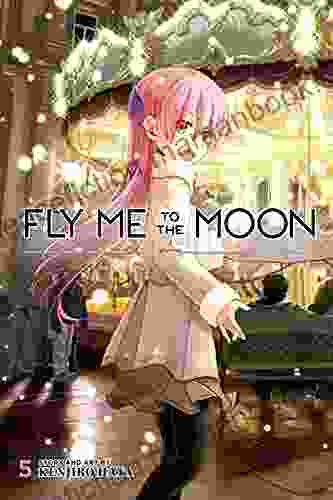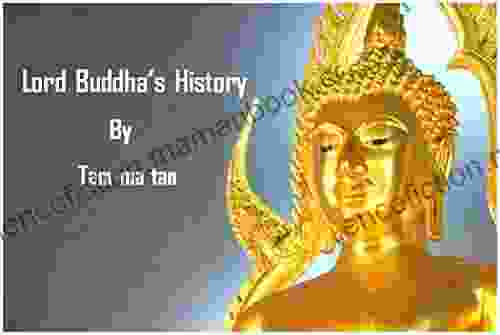Exploring the Profound Teachings of Lord Buddha: Shifio Patterns and Their Significance

In the tapestry of spiritual traditions, the teachings of Lord Buddha stand as a beacon of wisdom, guiding countless individuals towards enlightenment for over two millennia. Among the many profound teachings that form the foundation of Buddhism, the concept of Shifio patterns holds a unique and captivating significance.
5 out of 5
| Language | : | English |
| File size | : | 1264 KB |
| Text-to-Speech | : | Enabled |
| Screen Reader | : | Supported |
| Enhanced typesetting | : | Enabled |
| Print length | : | 13 pages |
| Lending | : | Enabled |
Historical Origins and Symbolic Significance
The term "Shifio" is derived from the Tibetan word "gshifi'o," which translates to "lion throne" or "lion seat." In Buddhist iconography, the Shifio is a distinctive geometric pattern often found adorning the base of Buddha statues or depicted on ritual objects. The intricate design comprises a series of concentric circles, each adorned with lotus petals, and is believed to symbolize the enlightened mind of the Buddha.
The lotus flower holds special significance in Buddhism, representing purity, compassion, and spiritual awakening. The concentric circles, on the other hand, represent the stages of the path to enlightenment, from the initial awakening of spiritual aspiration to the ultimate realization of Buddhahood.
Esoteric Meanings and Meditative Practices

Beyond their symbolic representation, Shifio patterns play a central role in Buddhist meditation practices. The intricate design serves as a visual aid, guiding practitioners through various stages of contemplation and introspection.
By focusing on the Shifio pattern, practitioners can cultivate mindfulness, concentration, and a profound connection with the teachings of the Buddha. The circular nature of the design encourages a cyclical approach to meditation, where practitioners return repeatedly to the same concepts, deepening their understanding and insights with each cycle.
Contemporary Relevance and Applications
While Shifio patterns originated centuries ago, their significance extends well into the 21st century. The timeless wisdom embedded within these symbols continues to resonate with individuals seeking spiritual growth and self-discovery.
In modern-day Buddhist practice, Shifio patterns can be incorporated into various practices, such as:
- Meditation: Using the Shifio pattern as a focal point for meditation can enhance concentration and cultivate inner peace.
- Rituals: Incorporating Shifio patterns into ritual objects, such as altars or prayer beads, can create a sacred space and foster a sense of devotion.
- Artwork: Shifio patterns are often incorporated into Buddhist art, serving as a visual reminder of the Buddha's teachings and inspiring spiritual contemplation.
- Personal Adornments: Wearing jewelry or clothing adorned with Shifio patterns can serve as a subtle expression of faith and a reminder of the path to enlightenment.
The Shifio patterns, rooted in the profound teachings of Lord Buddha, offer a timeless source of wisdom and guidance for spiritual seekers. By understanding their historical origins, symbolic meanings, and contemporary applications, we can harness the transformative power of these enigmatic symbols to deepen our understanding of the path to enlightenment and cultivate a more mindful and compassionate life.
Whether through meditation, ritual practices, or artistic expression, the Shifio patterns continue to inspire and guide individuals on their journey towards spiritual awakening, reminding us that the teachings of the Buddha remain as relevant and profound today as they were over two millennia ago.
5 out of 5
| Language | : | English |
| File size | : | 1264 KB |
| Text-to-Speech | : | Enabled |
| Screen Reader | : | Supported |
| Enhanced typesetting | : | Enabled |
| Print length | : | 13 pages |
| Lending | : | Enabled |
Do you want to contribute by writing guest posts on this blog?
Please contact us and send us a resume of previous articles that you have written.
 Top Book
Top Book Novel
Novel Fiction
Fiction Nonfiction
Nonfiction Literature
Literature Paperback
Paperback Hardcover
Hardcover E-book
E-book Audiobook
Audiobook Bestseller
Bestseller Classic
Classic Mystery
Mystery Thriller
Thriller Romance
Romance Fantasy
Fantasy Science Fiction
Science Fiction Biography
Biography Memoir
Memoir Autobiography
Autobiography Poetry
Poetry Drama
Drama Historical Fiction
Historical Fiction Self-help
Self-help Young Adult
Young Adult Childrens Books
Childrens Books Graphic Novel
Graphic Novel Anthology
Anthology Series
Series Encyclopedia
Encyclopedia Reference
Reference Guidebook
Guidebook Textbook
Textbook Workbook
Workbook Journal
Journal Diary
Diary Manuscript
Manuscript Folio
Folio Pulp Fiction
Pulp Fiction Short Stories
Short Stories Fairy Tales
Fairy Tales Fables
Fables Mythology
Mythology Philosophy
Philosophy Religion
Religion Spirituality
Spirituality Essays
Essays Critique
Critique Commentary
Commentary Glossary
Glossary Bibliography
Bibliography Index
Index Table of Contents
Table of Contents Preface
Preface Introduction
Introduction Foreword
Foreword Afterword
Afterword Appendices
Appendices Annotations
Annotations Footnotes
Footnotes Epilogue
Epilogue Prologue
Prologue John Keats
John Keats Troy Mccombs
Troy Mccombs Garous Abdolmalekian
Garous Abdolmalekian Keiko Kitamura
Keiko Kitamura Nevil Shute
Nevil Shute Derrick Darby
Derrick Darby Giovanni Abbiati
Giovanni Abbiati Roslyn Sinclair
Roslyn Sinclair Michael Ruhlman
Michael Ruhlman Rick Rodgers
Rick Rodgers Holly Bridges
Holly Bridges Emily Sun
Emily Sun Sam J Fires
Sam J Fires Dr Howard Jeffrey Bender
Dr Howard Jeffrey Bender Nikos Kazantzakis
Nikos Kazantzakis Colleen Mccullough
Colleen Mccullough C S Churton
C S Churton Soweto Satir
Soweto Satir Burton Raffel
Burton Raffel Francisca Orellana Polanka
Francisca Orellana Polanka
Light bulbAdvertise smarter! Our strategic ad space ensures maximum exposure. Reserve your spot today!

 Hugh BellThe Allure of Forbidden Love: Exploring the Intriguing World of Young Chinese...
Hugh BellThe Allure of Forbidden Love: Exploring the Intriguing World of Young Chinese... Noah BlairFollow ·10k
Noah BlairFollow ·10k Christopher WoodsFollow ·11.1k
Christopher WoodsFollow ·11.1k Isaac MitchellFollow ·7k
Isaac MitchellFollow ·7k Louis HayesFollow ·10.8k
Louis HayesFollow ·10.8k Deacon BellFollow ·19.4k
Deacon BellFollow ·19.4k Aldous HuxleyFollow ·17.1k
Aldous HuxleyFollow ·17.1k Gene SimmonsFollow ·13.2k
Gene SimmonsFollow ·13.2k Holden BellFollow ·8.6k
Holden BellFollow ·8.6k

 Ashton Reed
Ashton ReedClean(ish) Food for People Who Like to Eat Dirty
By: [Your Name] Are...

 Ronald Simmons
Ronald SimmonsThe Handbook for Educators: A Comprehensive Guide to...
The Handbook for...

 Derrick Hughes
Derrick HughesAny Place Hang My Hat: A Hauntingly Beautiful Novel by...
A Masterpiece of...

 Adrien Blair
Adrien BlairFly Me to the Moon Vol. 5: A Lunar Odyssey through...
In the vast...

 William Powell
William PowellTips By Gardeners On Variety Of Subjects
Gardening...
5 out of 5
| Language | : | English |
| File size | : | 1264 KB |
| Text-to-Speech | : | Enabled |
| Screen Reader | : | Supported |
| Enhanced typesetting | : | Enabled |
| Print length | : | 13 pages |
| Lending | : | Enabled |












